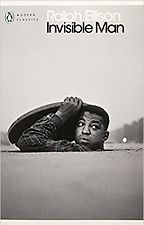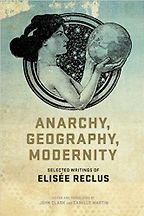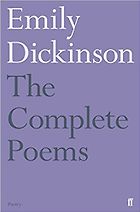What is radical environmentalism?
One way to begin answering that question is to think first about mainstream environmentalism. In the American context, I would say it’s essentially resource management—saving trees, making sure the water and air are clean-ish, looking after the animals, preserving wilderness, et cetera. One branch of radical environmentalism brings human nature and society into the equation, and the strain that I’m most interested in argues that you can’t have freedom, justice and equality for people unless you also have an environment that’s healthy and free and self-determinant. Society and nature are always tightly linked.
Is radical environmentalism inimical to the idea of ownership?
To some extent, yes. The radical environmentalism I’m interested in sees things like land, timber, subsurface oil and mineral rights, and the atmosphere as commons, not just for humans, but for all living things. This is not to say there are no acceptable forms of property. You can own your clothes and your tools, for example! But owning the land—‘natural resources’—that’s out.
Tell us about your book, This Radical Land.
There are two great crises in our world today. One is the crisis of climate change and the total contamination of the environment—the crisis of the Anthropocene. The other is this crisis of enormous and galloping social inequality, and the violence that comes with it.
One of the things that the book is trying to say is that these two things are connected. To understand how, I look to the past, to the 19th century, which is when modern America emerges. It’s the era of manifest destiny and the creation of industrial capitalism in the US, and I try to try to see how people at the time were responding to the massive environmental effects that would in time lead to global climate change. But it was also the era of slavery, of the wars of extermination waged against the American Indians, the consolidation of a predatory capitalism. The link between environmental catastrophe and social crisis is exploitation—the idea that everything that exists does so for the benefit of a very few humans.
“The link between environmental catastrophe and social crisis is exploitation”
In four interrelated essays, I recover stories that counter the history of exploitation. Each essay is a tale of how radicals were linking the landscape to society and trying to create landscapes that reflected both environmental sensitivity and social justice. Each is structured around either a single tree or a whole group of trees, and spins out from there to the way that different landscapes, landscapes of freedom, have been constructed around different understandings of the role of trees.
For example, the second essay is called ‘The Geography of Grace: Home in the Great Northern Wilderness.’ It covers a period from 1846 to 1860 in the Adirondack Mountains of northern New York state—an area that then, as now, was one of the larger areas of wilderness in the country. In 1846, a band of African American abolitionists settled there on an area of some 120,000 acres. They set up a series of communities—one of them known as Timbuctoo [sic]—that sought to extinguish racism in the United States through a practise that I call utopian agrarianism. Their idea was that through farming, they would be cultivating not just crops but also a sort of metaphysical freedom for themselves and for the rest of the United States. There’s a lot in the chapter about wilderness and rethinking wilderness, as well: how were these African American settlers thinking about wilderness? Hint: it’s not in the typical ‘man is a visitor who does not remain’ way of the United States’s 1964 Wilderness Act.
What happened to this community?
It is hardly a plot spoiler to observe that America has not solved the problems of racism, violence or environmental degradation. That said, I also want to note that—at least in the US—we often tend to write off communes or socialist experiments as pie-in-the-sky. But this Adirondack experiment was a very important and well-known venture in its time. It had the backing of prominent abolitionists, including Frederick Douglass, who throughout the 1850s was constantly promoting it in his newspaper, The North Star.
Part of what happened is that John Brown moved to the colony in 1849. This wasn’t the John Brown that we think of today. He wasn’t yet the guy who wanted to overthrow slavery by violence, who raided Harpers Ferry, and sparked the Civil War. He was a committed abolitionist, but mostly he was broke and on the run—a failed capitalist and farmer. It was in the Adirondacks that he started becoming much more militant, and conceived and launched the raid in 1855 against pro-slavery settlers in the Kansas territory that resulted in the killing of five pro-slavery settlers and became known as the Pottawatomie massacre. Brown was charismatic and he started to gain the attention of northern abolitionists, especially those with deep pockets and influence, those who had formerly supported Timbuctoo. These supporters started to lose interest in the slower, utopian revolution that was happening in the Adirondacks, and once the Civil War broke out, no one was really interested in peace anymore. Without support, the Adirondack community slowly faded away. I should note, though, that a number of African Americans stayed in the area, and you still can find some traces of them there today.
Let’s jump to a tree called Karl Marx. What’s the story?
In the mid 1880s, about 20 years after the Civil War, a band of California radicals—socialists, anarchists, dissidents of all types—decided, rather like the settlers in the Adirondacks, that the best way to reform the country, to reform capitalism was through the creation of an intentional socialist community. They settled on a few thousand acres in the Sierra Nevada mountains, which included the largest stands of Sequoia trees. The biggest of these Sequoias, the biggest tree in the world, was named General Sherman in 1879 after the Civil War soldier who was also famous for brutally exterminating the Indians. When the socialists and anarchists took over the forest containing General Sherman, they renamed it the Karl Marx. The tree became the spiritual centre for what these communards hoped would be a peaceful socialist revolution, remaking the US in terms of social justice and environmental sensitivity.
Five Books interviews are expensive to produce. If you're enjoying this interview, please support us by donating a small amount.
But these settlers lived by cutting down some of the trees?
Yes, the communards started a logging operation to provide Central California with timber. They aimed to out-compete the Southern Pacific Railroad, which was the most hated monopoly in the US, and was bringing timber in from out of state. The radicals were cutting, but only the smaller trees, which were better for lumber than the giant Sequoias. All humans leave a mark on the land somehow, right? But the communards were sensitive to their environmental footprint and cut very deliberately. They planned to open up the great Sequoia groves to the public. They wanted their community to be both a place to live, and a place to visit where they could model the environmental sensitivity and social justice that they were working towards.
So what happened?
The Southern Pacific Railroad saw the commune as a threat to their bottom line. At the same time, a number of Californian conservationists and preservationists wanted to create a Sequoia National Park to go along with Yosemite. The conservationists and capitalists got together and rushed an unread park bill through Congress that included all of the communards’ land—no one, except for a few at the Southern Pacific, actually knew what was in the bill. A few months later, the radicals were chased off their land by the US cavalry. Sometimes you’ll find a short mention of this commune, known as Kaweah, in the National Park literature, but it’s essentially a forgotten footnote—one of those paths not taken that I think is nonetheless really important to remember in the era of increasing economic inequality and environmental degradation in which we find ourselves.
Your first book choice is Maggie Nelson’s The Argonauts. How does this relate to your theme?
No one would read this book and think to themselves, ‘Oh, obviously, this is a great work of radical environmentalism.’
Yes, I found the book striking, but its environmentalism wasn’t one of the things that struck me.
This book is a work of creative nonfiction. Maggie Nelson is a theorist, a poet, an essayist—an extraordinary writer and thinker. The book is a meditation on identity, on art, and, after Nelson—who identifies as queer and is married to the gender-fluid artist Harry Dodge—becomes pregnant and has a baby, on reproduction. It is, at heart, a long discussion of relationship: how we relate to others, how the boxes of identity influence those relationships, what we care for and leave behind. Isn’t there something inherently environmental about each of those questions?
Henry David Thoreau—an obvious choice for any discussion of radical environmentalism—writes about looking at things with ‘the side of one’s eye’ to gain insight. If one reads The Argonauts with the side of one’s eye, then I think what Nelson is really talking about is listening: listening to the other. Listening, carefully, is an attitude of radical humility—and ‘humility’ like ‘human’ shares an etymological root with the word ‘humus,’ with generative, nutritive soil.
At the very end of The Argonauts Nelson writes: “Is there really such a thing as nothingness? I don’t know. I know we’re still here, who knows for how long? Ablaze with our care, its ongoing song.” It seems to me that this notion of living a life blazing with care, of choosing to care for one another, for everything else, is the seed of the radical environmentalism I write about. When we open up environmentalism to include things beyond trees or animals or the water, to people in general—and not just affluent white male hikers, but people of colour, women, LGBTQ+, poor folks—this is the real hard shining core of a radical environmentalism that gets us to interaction, to interrelationship, to what we leave in our wake.
You have written beautifully about relationship across the dimension of time, through reading to your children.
If I could have picked a sixth book, it would probably have been The Lost Words by Robert MacFarlane and Jackie Morris. I have two kids, two boys, a seven-year-old and a three-year-old. I’ve read what seems like thousands of books to them at this point. Sure, I hope to teach them to love words, to increase their vocabulary, and we have fun together. But it occurred to me, somewhere in all that reading, that what I was really doing was sitting with two beings who are very different from me—that we were sharing the space together, that we were sharing a time together, and caring for each other.
That, it seems to me, is the point of a radical reproduction—the reproduction of care. I think that this reproduction is so incredibly important, whether one decides to have kids or not. It’s not necessarily about what one passes on to one’s children, but what one passes on generally to all those that are ‘not-me.’
One of the reasons that capitalist reproduction is so antithetical to life is that it’s not about care. It’s about personal accumulation. I think Maggie Nelson gets us to this caring. This caring is part of what I’m trying to recover in my own book as well.
Your second choice is Ralph Ellison’s Invisible Man. Again, how does this connect to your theme?
I want to help open up the category of environment widely—to let in people who have traditionally been excluded from mainstream environmentalism, and in the US this exclusion has almost always targeted people of colour. Ralph Ellison’s novel is the story of an unnamed narrator, set, initially, in the rural South. He works his way up to a prestigious black college, journeys north, works in factories and, at the conclusion of the novel, ends up living underground in a space lit by 1,369 lightbulbs.
Part of what makes this radically environmental, I think, is that the book traces his movement through spaces and landscapes of exploitation—whether it’s the Southern sharecropping landscape, or the Northern industrial factory one. The book charts the way that an individual person interacts with landscapes, economies, cultures—with different environments. What the novel pinpoints relentlessly, and I should say beautifully, is the environment of exploitation, whether southern and agrarian or northern and industrial. There’s no purity in any of these landscapes.
The narrator is constantly trying to overcome exploitation, whether by the traditional route of pulling himself up by the bootstraps or, later in the novel when he joins a Marxist cell. But he can’t. He fails, or rather, every system fails him. This is a deeply pessimistic novel, with no resolution or clear path forward—and yet, it’s a novel with great resolve. There’s a great line near the end of the novel where the narrator says: “Life is to be lived, not controlled. And humanity is won by continuing to play in the face of certain defeat.”
“Humanity is won by continuing to play in the face of certain defeat”
This, to me, really resonates with the scientist and environmentalist Rachel Carson, who entitled one of the chapters of Silent Spring, ‘The Obligation to Endure.’ Isn’t that what Ellison is writing about? What a bracing, defiant, radical environmental ethic: “Life is to be lived, not controlled. And humanity is won by continuing to play in the face of certain defeat.”
Tell us about your third choice: Anarchy, Geography, and Modernity by Elisee Recluse.
The works of Recluse, a French anarchist writing in the late 19th and early 20th centuries, are not particularly well known in English because not many of them have been translated. He was amazingly productive: his magnum opus, known in English as The Earth and its Inhabitants, is an enormous work running to six volumes, and he wrote scores of other pamphlets, articles, and essays.
‘Capital A’ anarchism has always been explicitly environmental. The thread begins with Pierre-Joseph Proudon, runs through Recluse and through Peter Kropotkin, who came up with an modification to Darwin’s theory of natural selection, arguing that cooperation—mutual aid—is a factor of evolution alongside competition. It continues though Emma Goldman, whose magazine was called Mother Earth, on into the second half of the 20th century in the work of the green anarchist and social ecologist Murray Bookchin and the essays of Edward Abbey. Today, Derrick Jensen, among others, is continuing to cultivate the tradition of green anarchism.
Recluse, to return to my point, is consistent in arguing that human freedom and justice are dependent on our environments. He is a wild read. He takes you through anti-capitalist politics, feminism, vegetarianism, free love, and a version of sustainable development.
Your fourth book is Savage Dreams by Rebecca Solnit. This is one of her less well-known books, I think.
It is. Though Solnit had written an exhibition catalogue or two before Savage Dreams, this is her first standalone creative nonfiction book. Solnit before she was ‘the’ Rebecca Solnit. Savage Dreams is wonderful, amazing; it’s everything we all love about her writing. It has the deep research, the unbelievably sharp thinking, the beautiful, beautiful prose.
Part of what makes Solnit Solnit—and radically ecological—is the way that she links disparate things together. Except that Solnit does this great cultural, political, and intellectual history and finds that the two sites resonate with each other deeply: the culture that would create nuclear test sites is the same culture that would create Yosemite National Park. They’re two sides of the same coin.
Solnit does this all in incredible, electric glowing prose—a model for the way that I want to write. Hers is a literary form that is not linear but weblike, ecological. Savage Dreams is, unfortunately, underread in the Solnit canon. I highly recommend it.
Tell us about your last choice, The Complete Poems of Emily Dickinson
I have an affinity for Emily Dickinson. She saved my life. And so I try to work her into everything I do. She embraces desperation, but does not give in. A quiet refusal comes through in a lot of her poems, as well as an incredible humility and humanity. Could you imagine a conversation between she and Ellison? Here, let me read a poem of hers: it’s number 41.
I robbed the Woods —
The trusting Woods.
The unsuspecting Trees
Brought out their Burs and mosses,
My fantasy to please.
I scanned their trinkets curious —
I grasped — I bore away —
What will the solemn Hemlock —
What will the Oak tree say?
What I love about this poem is that it returns us to this attitude of listening, though there may be nothing to hear. She asks us to be quiet, to sit still, to listen to things we have wronged. Dickinson doesn’t offer an answer, but leaves us with a series of questions. She doesn’t tell us what we should do or what we shouldn’t do, other than that we should simply listen. Maybe that’s enough. Maybe, before we can figure out how to get out of this mess, we need to pause with Emily. Pause in the trees, listening. Maybe, that way, we’ll learn how to care.
Five Books aims to keep its book recommendations and interviews up to date. If you are the interviewee and would like to update your choice of books (or even just what you say about them) please email us at [email protected]












